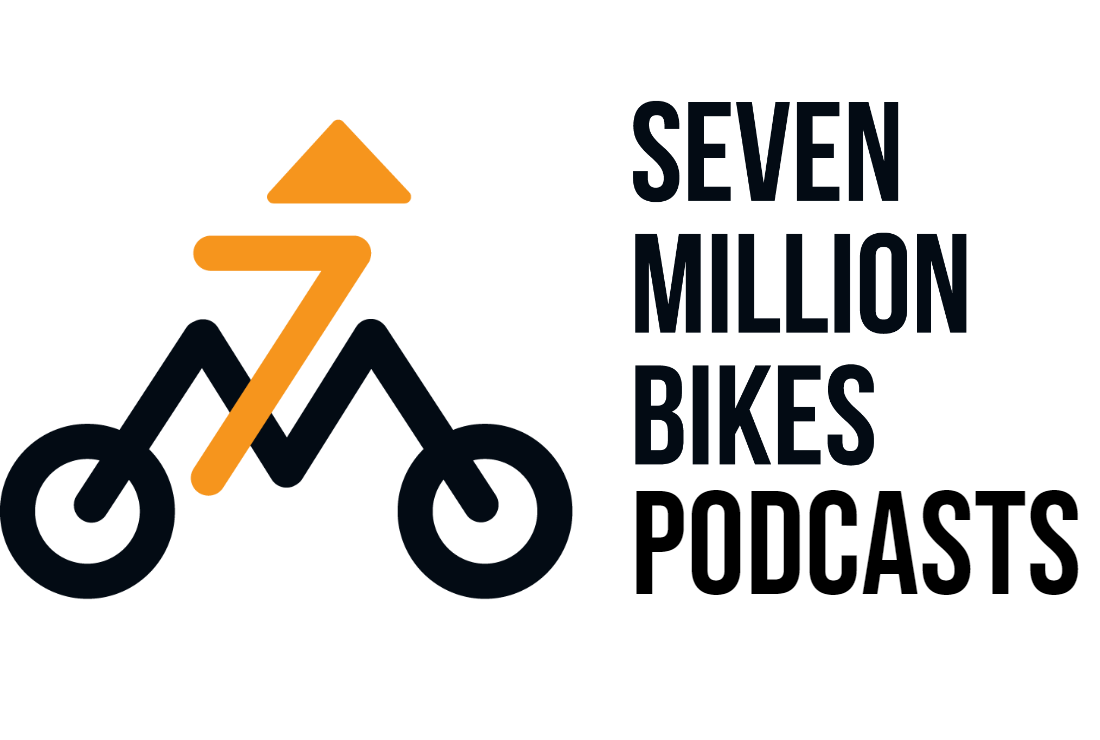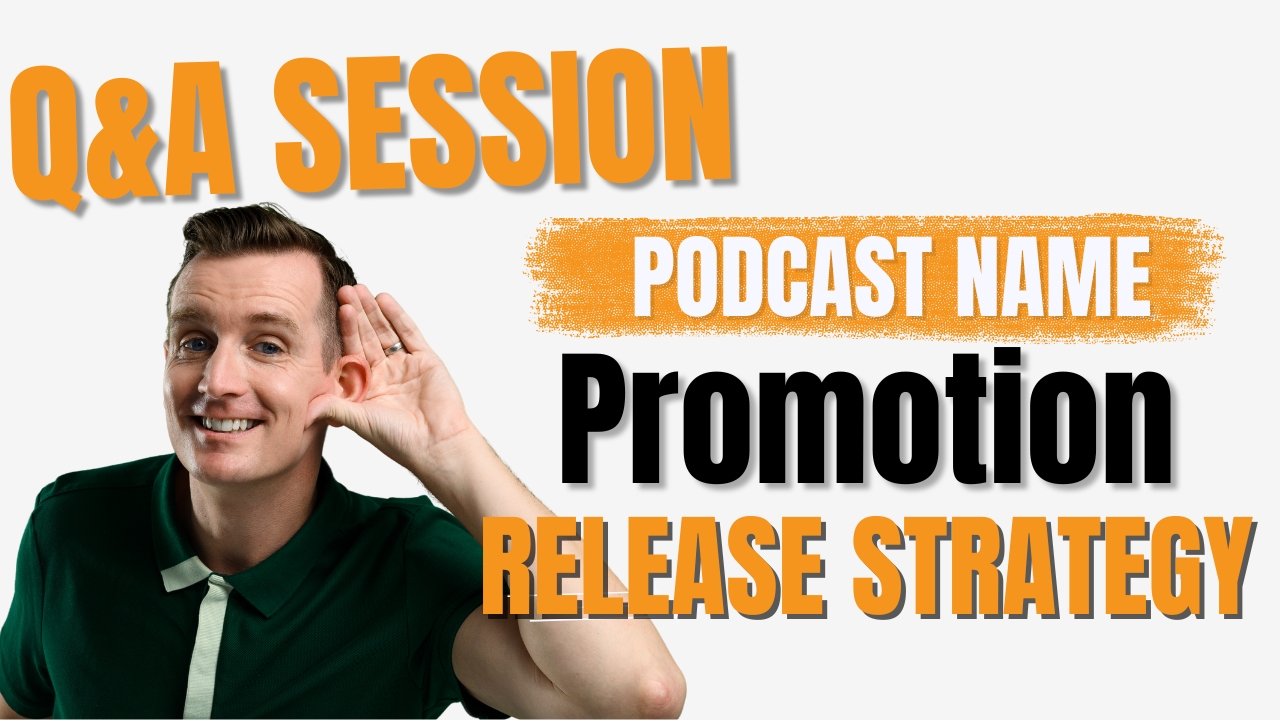My name is Niall Mackay, The Podcast Guy.
I’ve been podcasting since 2019, and along the way, I’ve learned a lot—from building a show from scratch to helping others launch and grow theirs through Seven Million Bikes Podcasts. Now, I host Smarter Podcasting to share those lessons and help indie podcasters make better content, grow their audiences, and actually enjoy the process.
This blog is a little different, as I host a Q&A episode for the first time. I asked my followers on LinkedIn for ideas, and the response was incredible. And I loved digging into the real, practical challenges podcasters are facing right now.
I’m breaking down those questions in this blog. Whether you’re just getting started or you’re a few seasons in, I hope these insights help you get smarter about podcasting, too.
Table of Contents
How Important Is the Podcast Name?
One of the most common questions I get from podcasters—especially those just starting out—is: How important is the name of your podcast?
Well, I like to joke that naming your podcast is a bit like naming your first child or your first album. Maybe it’s not that serious, but it’s close! The short answer is: your podcast name is absolutely crucial. It’s the first thing people see. They may not remember your episode titles or your show notes, but they’ll remember the name. So it needs to count.
Keep It Short, Simple, and Visible
You’ve probably heard the phrase KISS: Keep It Short and Simple. That couldn’t be more true when it comes to podcast names. Why? Because of how podcast platforms are designed.
Most people listen on their phones, and platforms like Spotify and Apple Podcasts only show a limited number of characters. If your title’s too long, it gets cut off. Those first 2–3 words matter most.
Apps like Spotify, Apple Podcasts, and YouTube offer limited space. If your title is too long, it gets cut off after 70 characters or fewer, especially on mobile.
Make It Obvious What Your Podcast Is About
Let me give you a personal example. When I started my first podcast back in 2019, I called it Seven Million Bikes: A Saigon Podcast. And the kicker? I had people reach out asking if I rented motorbikes. That’s when I knew something had to change.
So I dropped the “Seven Million Bikes” and renamed it to A Saigon Podcast, and later A Vietnam Podcast as my guest list grew beyond Saigon. Eventually, I dropped the “A” too. Now, if you search “Vietnam” on Spotify or Apple Podcasts, Vietnam Podcast is one of the top results.
Why? Because:
- It’s simple
- It’s specific
- It includes a keyword
- And it matches what people are actually searching for
Add a Tagline for Clarity and Searchability
One of the best tips I’ve picked up is to add a tagline to your podcast title. This doesn’t mean changing the official name—just the way it displays on directories.
For example:
- My show Vietnam Podcast shows up as:
Vietnam Podcast: Culture, Community, and Conversations - Smarter Podcasting, this very blog’s companion podcast, shows up as:
Smarter Podcasting: Making Podcasts Better
Adding a tagline helps clarify what your show is really about.
How Often Should You Release a Podcast?
This is a question I get asked all the time, and honestly, I get why—because there’s no one-size-fits-all answer. But if I had to give you a straightforward response, I’d say: aim for weekly.
Weekly episodes help you:
- Build momentum and consistency
- Grow your audience more reliably
- Become part of your listener’s routine
That said, I get it—life gets in the way. When I first launched Smarter Podcasting, I went weekly… then immediately realized I couldn’t keep it up. It was draining. But I came back to it later because I knew it made a difference.
Of course, not all podcasts need to be weekly:
- Daily: Best for news-focused shows (The Daily by NYT, Rush Hour Podcast)
- Weekly: Ideal for interviews, education, or storytelling formats
- Biweekly: Works if content is dense or you’re short on time—but stay consistent
- Monthly: Honestly? Only works in niche cases (e.g. solo history podcast with heavy research)
There’s no “accepted” frequency that’s right for everyone. But whatever cadence you choose, make it consistent. Your audience wants to know when to expect you—don’t keep them guessing.
How Do You Stay Aware During a Conversation and Ask Direct Questions?
Hosting a podcast isn’t just about hitting “record” and chatting. One of the most underrated (and hardest) skills is staying fully present in the conversation while also steering it in the right direction. This is where active listening comes in.
Now, I’ve had a bit of training for this without even realizing it—doing stand-up comedy. On stage, you’re delivering jokes, watching the audience, adjusting your delivery and thinking three punchlines ahead. It’s wild. And weirdly enough, podcasting can feel the same. You’re speaking, listening, reacting, and planning your next question—all at once.
So, how do you stay aware?
Practice Active Listening:
- Don’t just wait for your turn to talk—really listen
- React to what your guest is saying, not what you planned to ask
- Let the conversation flow naturally—even if it veers off-script
Avoid “stacked questions”:
You know the ones:
So, how did you get started… and what was the biggest challenge… and how did that make you feel?
Three questions in one. Overwhelming for the guest, confusing for the listener.
Instead, ask one clear, direct question, then pause. Just stop talking. Yes, it might feel awkward, but that pause gives your guest space to answer thoughtfully.
Be prepared, not scripted:
- Know the direction you want to go, but be flexible
- You’re not an interrogator—you’re a guide
And if all else fails, edit it later. That’s the magic of podcasting. You don’t have to be perfect in real time—just intentional.
“How do you turn listeners into leads?”
A million-dollar question. How do you turn people who love your podcast into actual paying customers?
Here’s the truth: there’s no magic button. Podcasting is a long game. But it works—if you do it right.
Step 1: Build Trust First
Before anyone buys from you, they need to know you, like you, and trust you.
That means you need to consistently deliver:
- High-value, engaging content
- Professional-quality audio and video
- Clear, honest messaging about what you do and how you help
Podcasting isn’t a sales pitch—it’s about building relationships. You’re showing your expertise, sharing stories, and building that trust over time.
Step 2: Create a Lead Magnet
Once people know and trust you, it’s time to capture their attention (and their email address).
Offer something of value in exchange:
- A free eBook or checklist
- A cheat sheet
- A template or guide
- Even a free mini-course
For Smarter Podcasting, I offer a free eBook:
“How to Turn Loyal Listeners Into Customers”
People can download it on my website, and boom—they’re in my ecosystem. They get value, I get a lead. Win-win.
Step 3: Use Email to Nurture
Once they’re in, use an email flow:
- Share tips, case studies, and more value
- Build the relationship even further
- Invite them to work with you when the time is right
And that’s the key. Play the long game. Think of podcasting like a TV ad. You’re not asking people to buy right now—you’re showing up consistently so they think of you when they’re ready to buy.
What’s the Best Podcast Editing Web App?
Here’s what makes Descript stand out from every other editing tool I’ve tried:
- Cloud-based collaboration: My team and I can work on the same project in real time, from anywhere in the world. No uploading and downloading huge files back and forth.
- Live syncing: When someone on my team makes a change, I see it immediately. That kind of responsiveness is a game-changer.
- Text-based editing: You can edit your podcast by editing the transcript. It’s like working in Google Docs—but for audio and video.
- Auto transcription: Fast, accurate, and built right in. Perfect for repurposing content.
- Video tools included: We can edit podcast videos, create reels, and make client content all in one place.
How To Promote a Podcast on Social Media Without Being Spammy?
Let’s be honest—we’ve all seen (or done) the “New episode out now! Don’t miss it!” post. And guess what? That kind of post doesn’t work. It doesn’t give value. It’s not engaging. It’s just… noise.
So if you want to promote your podcast without being spammy, here’s what I’ve learned.
What Not to Do
- Don’t just drop your link in a Facebook group with no context.
- Don’t post your cover art and say “Check it out!” with zero explanation.
- Don’t blast the same message on every platform and hope for the best.
What to Do Instead
1. Provide value first
Whatever your niche is, join communities and actually engage. Answer questions. Share tips. Contribute as a real person—not a walking billboard.
2. Create short-form video content
This has changed the game. We create video clips (not audiograms!) from podcast episodes and repurpose them across:
- Instagram Reels
- TikTok
- YouTube Shorts
One great clip = 5 platforms.
Five clips a week = 25 pieces of content.
Even with 100 podcast downloads, you can hit 25,000+ views from video.
3. Use storytelling and curiosity
Instead of “Don’t miss this episode,” say:
“Ever wonder how to grow a podcast without paid ads? Here’s what worked for me after 200 episodes…”
You’ve got to hook people with insight, not just inform them that something exists. So stop shouting and start showing. Give people a reason to care—and they will.
Conclusion
At the end of the day, podcasting isn’t about being perfect—it’s about being consistent, valuable, and intentional. Whether you’re trying to grow your audience, improve your hosting skills, or turn listeners into leads, every small improvement adds up.


